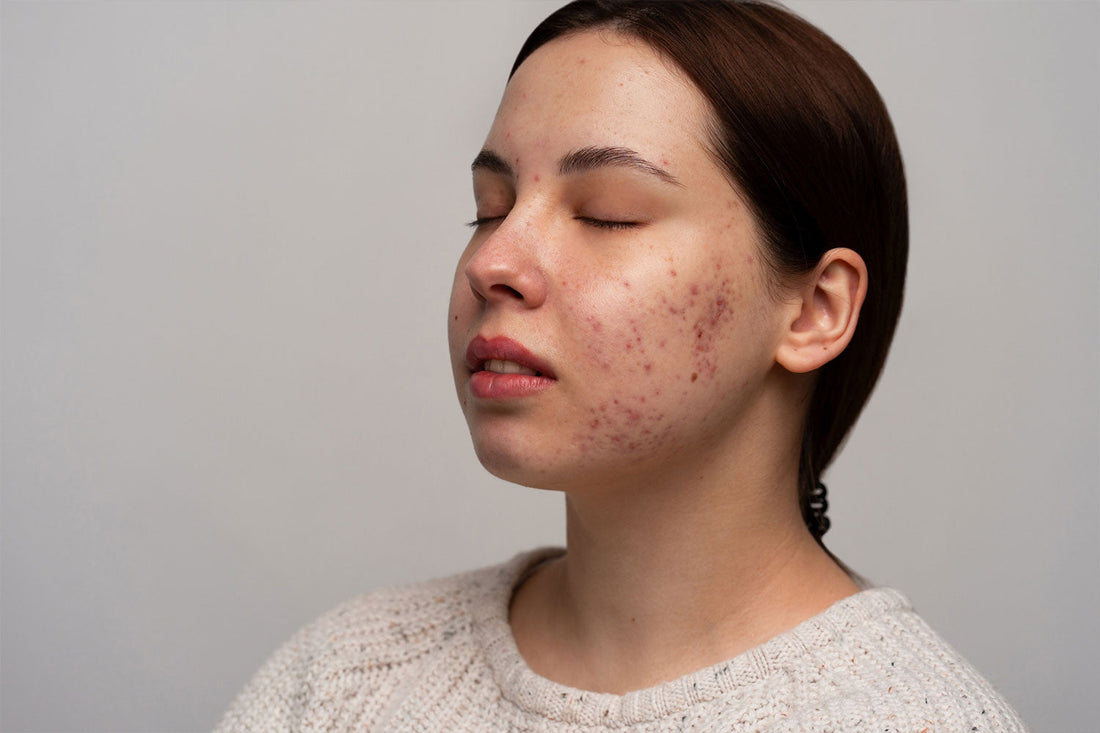
Melasma is more than just a skin concern. It’s something that can quietly impact how you feel about yourself. Those patchy brown or gray spots that appear on your face, especially your cheeks, nose, forehead, or upper lip, are not uncommon. But for many of us, it feels deeply personal. If you're wondering how to treat melasma on your face permanently, you're not alone and you're definitely in the right place.
At Bebo & Co, we understand what it feels like to battle uneven skin tone, persistent pigmentation, and skin that doesn’t always reflect how vibrant you feel inside. Let’s walk through what causes melasma, how you can treat it effectively, and the daily habits that actually make a difference.
First, What Causes Melasma?
- Melasma is often triggered by a combination of:
- Hormonal changes (pregnancy, birth control, menopause)
- Sun exposure
- Genetics
- Inflammation or skin trauma
-
Use of certain skincare or cosmetic products
It’s more common in women, especially those with medium to darker skin tones. The tricky thing? It often lingers or returns even after fading unless treated consistently and correctly.
Can Melasma Be Treated Permanently?
While melasma can be stubborn, it can be controlled long-term and significantly faded, sometimes to the point where it’s no longer visible. However, there’s no magic “permanent cure” that works overnight. The key lies in commitment, the right products, and protection.
Your Skincare Game Plan for Melasma
Let’s break it down into what you should do and what you might want to avoid.
What You Should Do:
1. Use Skin-Brightening Ingredients
Look for creams and serums that include gentle brightening agents like niacinamide, kojic acid, licorice root, and alpha arbutin. These reduce pigmentation without irritating your skin.
Try: Bebo & Co's Flawless Tone Pigmentation Cream — a lightweight, non-irritating formula designed to fade dark spots, melasma, and uneven tone gradually.
2. Never Skip Sun Protection
Melasma worsens with even a few minutes of unprotected sun exposure. Always use a broad-spectrum SPF 60+ daily, whether rain or shine, indoors or outdoors.
Use: Solar Bliss Sunblock by Bebo & Co — offers strong UVA/UVB protection and is safe for sensitive, pigmentation-prone skin.
3. Cleanse Gently
Harsh scrubs or foaming cleansers can aggravate your skin. Use a mild, non-drying face wash.
Cleanse with: Brita Glowing Face Wash — gentle on skin, yet tough on buildup and dullness.
4. Be Consistent
Results take time. Most users notice visible improvement within 6 to 12 weeks of consistent use of targeted treatments. Keep going because your glow is building.
5. Hydrate and Support Your Skin Barrier
Melasma-prone skin is often sensitive. Moisturize daily to maintain a healthy skin barrier.
What to Avoid:
- Skipping sunscreen (yes, even in winter!)
- Over-exfoliating or using strong acids
- Heavy, pore-clogging makeup
- Switching products too frequently
- DIY home remedies with lemon, toothpaste, or harsh ingredients
These habits can worsen pigmentation or trigger inflammation that leads to even more melasma.
Natural Remedies – Do They Work?
You might have heard of remedies like aloe vera, turmeric masks, or apple cider vinegar. While some can support a healthy glow, they don’t work as stand-alone treatments for melasma, and some can even irritate your skin. Always patch test first, and don’t skip proper treatment.
Bebo & Co’s Skin Solutions for Melasma

Looking for a reliable, skin-friendly way to tackle melasma at home? We’ve got you.
-
Flawless Tone Pigmentation Cream – Your go-to for fading melasma, dark spots, and uneven tone. Formulated with skin-brightening agents for visible improvement.
- Brita Glowing Face Wash – A daily essential that cleans without stripping your skin, prepping it for treatment products.
Melasma might be stubborn, but with the right knowledge and tools, you can win the long game. At Bebo & Co, we’re here to help you glow naturally, confidently, and safely because your skin deserves nothing less.
FAQs About Treating Melasma
Q: How long does it take to see results from melasma treatments?
A: You may begin noticing a difference in 4–8 weeks, with more visible fading in 3–6 months. The key is daily care and sun protection.
Q: Can melasma go away on its own?
A: In some cases, especially when caused by pregnancy or medication, melasma may fade gradually. However, most people benefit from targeted skincare and protection.
Q: Is it safe to treat melasma at home?
A: Yes, with the right dermatologist-tested products and gentle care, you can treat melasma effectively at home.
Q: Can men get melasma too?
A: Absolutely. Though it’s more common in women, men can also experience melasma, especially due to sun exposure and genetics.
